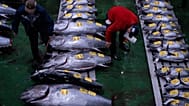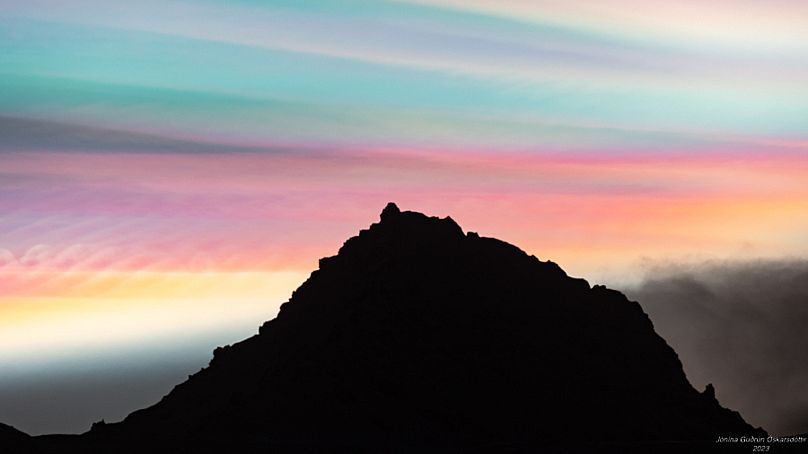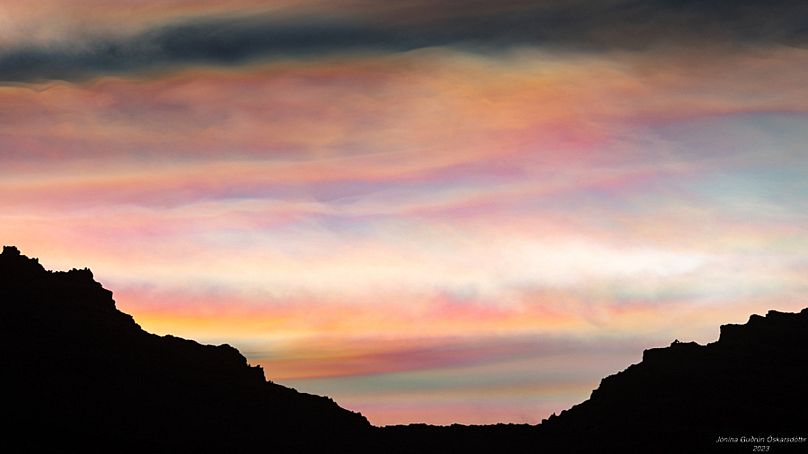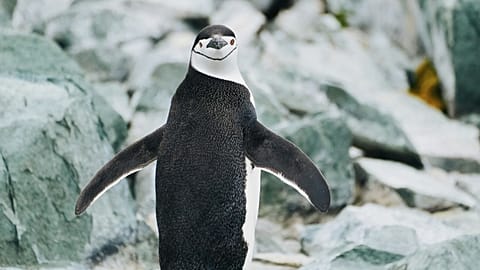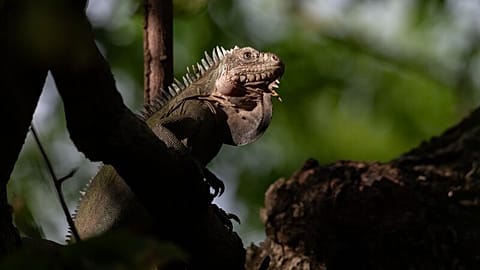This rare phenomenon may look pretty but it has worrying implications for the climate.
The Arctic Circle is best known for its Northern Lights.
But this emerald display was recently replaced by spectacular iridescent rainbows.
Rare ‘rainbow clouds’ painted the skies over the Arctic Circle in Finland, Iceland and Norway at the end of January.
The phenomenon, caused by extreme freezing temperatures in the stratosphere, was captured by Icelandic amateur photographer Jónína Guðrún Óskarsdóttir.
What are rainbow clouds?
While auroras occur when solar wind collides with atoms in the Earth's atmosphere, rainbow-coloured ‘polar stratospheric clouds’ (PSCs) are caused by tiny atmospheric ice crystals.
So-called ‘rainbow clouds’ are a result of cloud iridescence caused by small water droplets or ice crystals diffracting the sun’s light.
The effect can sometimes be witnessed in small areas of low-level clouds. But the display is far more dramatic when it happens higher up, in the stratosphere.
PSCs form when water vapour enters the stratosphere and when temperatures are cold enough for the vapour to condense there.
Since this layer of the atmosphere is very dry, ice crystals only form when temperatures are below -81C - a rare occurrence in the Arctic. PSCs occur higher up than regular clouds, at altitudes of roughly 19 to 24 km.
During the winter - or polar night - there is little to no radiation from the sun at high latitudes, causing significant temperature drops. Under these conditions, these ‘rainbow clouds’ can develop.
This phenomenon is relatively rare because it relies on a combination of thin clouds, cold stratospheric temperatures, and lots of water droplets or ice crystals of similar sizes.
What effect do rainbow clouds have on the climate?
Beautiful as they are, rainbow clouds are bad news for the climate.
The chemical reactions that they encourage break down the ozone layer, which shields Earth from the sun’s harmful UV rays.
Tiny ice crystals spark reactions between ozone and the chemical elements in chlorofluorocarbons (CFCs), which are released into the atmosphere by aerosols and refrigerators.
The ozone hole above the South Pole - where PSCs are more common there than in the Arctic due to lower stratospheric temperatures - is caused by these reactions.

